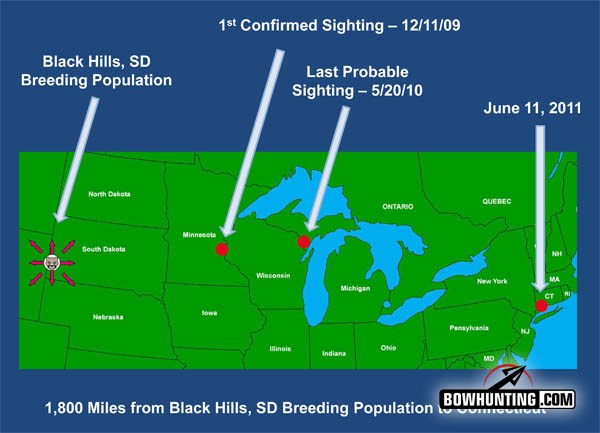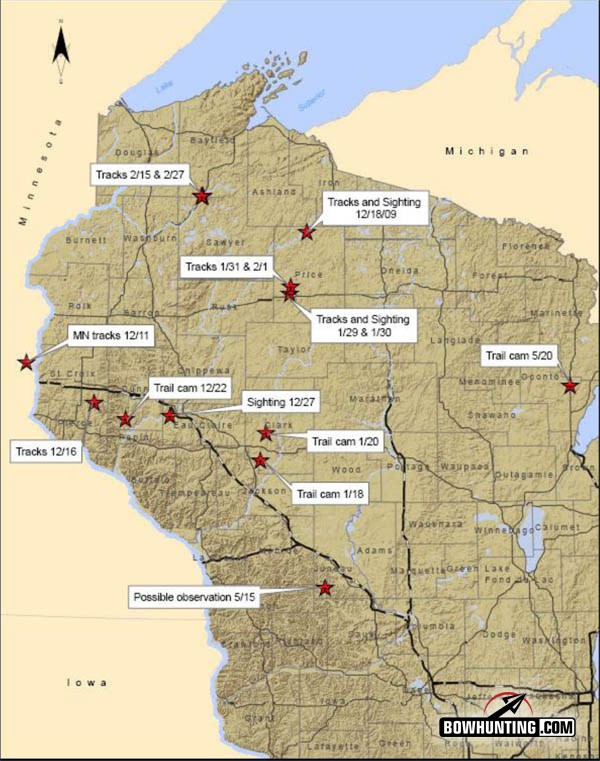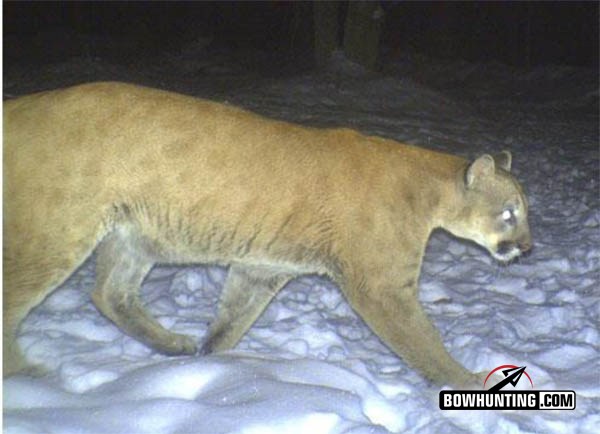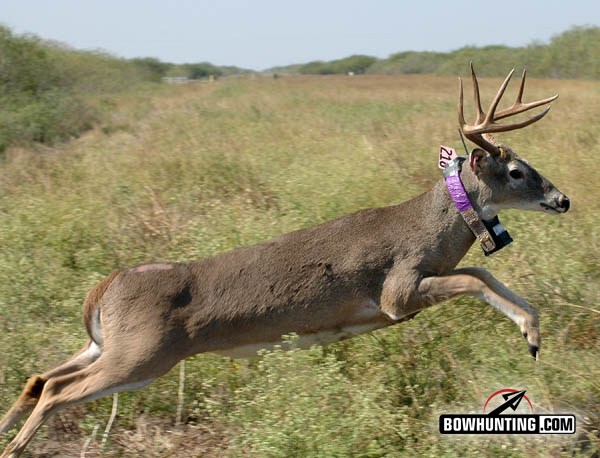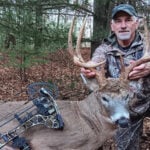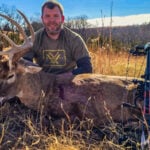LAST UPDATED: May 8th, 2015
An acquaintance of mine probably wasn’t surprised to hear about the cougar that wandered all the way from South Dakota to the East Coast before getting SUV’d in June on a Connecticut highway.
Sheesh. Talk about missing your exit and ending up in the wrong town!
This cougar first surfaced in eastern Minnesota in December 2009, and then traipsed over to northern Wisconsin later that month. It then roamed America’s Dairyland from January through May in 2010. It apparently then went north into Michigan’s Upper Peninsula and crossed into Canada. Sometime later, it crossed back into the United States and headed south through New York state before going on to meet its fate in Connecticut.
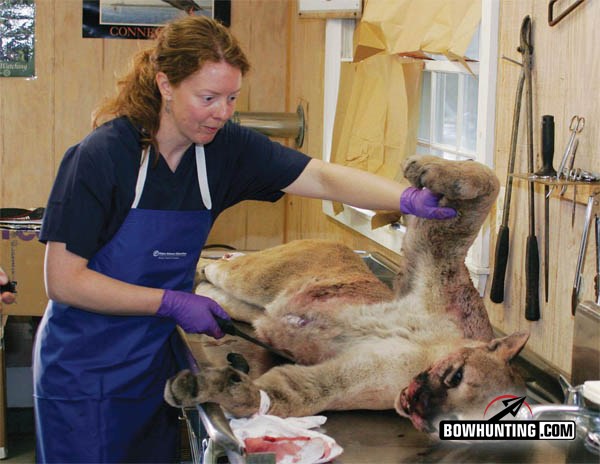
DNA from this cougar confirmed it originated in South Dakota, and wandered through Minnesota and Wisconsin about a year before getting killed by an SUV in Connecticut.
As I was saying, my acquaintance can relate. Years ago, he became tired while driving on I-90/I-94 in south-central Wisconsin, so his wife took the helm near Mauston. Before dozing off, he reminded her to take I-90 to La Crosse when the highways forked in 25 miles.
No problem, she said. When he awoke, they were pulling off to gas up. In St. Paul, Minnesota.
No problem. They found a motel room, slept off their irritation and took Highway 61 to La Crosse at dawn. The Mississippi River is so pretty in autumn, y’know.
Wayward cougars seldom find comfort in alternative routes. Cougar watchers might recall the cat that fled a barn near Milton, Wisconsin, in winter 2008, only to be shot dead by police in mid-April that year on Chicago’s North Side.
The cougar walked at least 1,800 miles from South Dakota’s Black Hills to Connecticut.
Likewise, other wandering cougars have been road-killed by Missouri motorists and gunned down by Iowa farmers. In most cases, the cougars are young males dispersing from South Dakota’s Black Hills.
Biologists believe these tomcats are simply looking for turf to call home; a place with food, shelter and breeding-age females. The cougars typically find some chow and cover, but keep searching when failing to wind a feminine feline. They eventually run out of luck and die too young.
At least the Connecticut cougar left his mark. According to Adrian Wydeven, a Wisconsin Department of Natural Resources biologist, the cougar’s romp to Milford, Conn., covered 1,055 miles on a straight line from Champlin, Minn., where it was first seen by police on Dec. 11, 2009. That’s a record. Assuming its trip actually began in the Black Hills, the straight-line distance was 1,800 miles.
The ‘Connecticut cougar’ was spotted in Wisconsin from late 2009 through June 2010.
This was Wisconsin’s fourth confirmed cougar sighting the past three years. All were young males.
Be assured, confused cougars and mystified motorists aren’t the only critters going astray. During recent decades, biologists have attached high-tech tags and collars on fish, birds and mammals to document their movements. Every now and then, they take wrong turns or listen to bad directions.
For instance, a lake sturgeon tagged in Wisconsin’s Lake Winnebago in 1978 was later netted in Saginaw Bay off Lake Huron in 1994, and again in May 1997 on the western end of Lake Erie. In June 1999, it washed ashore dead in Erie’s southwestern basin near Sandusky, Ohio; about 400 miles on a line from Oshkosh on Winnebago’s western shore.
The ‘Connecticut cougar’ was captured on a trail camera on January 18, 2010, in Clark County, Wisconsin.
But sturgeon are fish, not birds, so it had to swim at least 650 miles to get there. It first swam down the lower Fox River past De Pere, and then up the length of the bay of Green Bay, across Lake Michigan, beneath the Mackinac Bridge, down Lake Huron, down the St. Clair River, through Lake St. Clair, past Detroit, and then to Lake Erie.
There it died, presumably from exhaustion.
Another Winnebago sturgeon must have tried duplicating the feat. This fish was first tagged in April 1991 on the Embarrass River, nearly 110 miles northwest of Oshkosh. In May 2005, it was caught in the bay of Green Bay; and in April 2006 it was caught in Saginaw Bay on Lake Huron.
It hasn’t been heard from since. Maybe it’s still trying to find Lake Erie.
OK. Back to mammals: As with cougars, young male bears often wander lovelorn after Mom forces them out. One notable black bear shuffled 314.3 miles from Eglin Air Force Base in Florida to Baton Rouge, La., in 1996.
Biologists document many examples of wandering wildlife after attaching coded tags, collars, GPS devices and radio transmitters in fish, birds and mammals.
Wolves are no better. Wydeven said a young male from northern Minnesota holds North America’s “Wrong Way Corrigan” record among Canis lupus for its 550-mile jaunt to Saskatchewan. And an Upper Peninsula wolf holds the Great Lakes region record for its 447-mile spree to north-central Missouri.
Not far behind is a Wisconsin wolf that loped 428 miles in 2003 from Black River Falls to Winchester, Indiana. Just a few more miles and it would have made Ohio.
The world record for wolves, according to Wydeven, is the 678-mile expedition of a Norwegian wolf to the Finland/Russia border.
Impressed? Don’t be. A male lynx from British Columbia was once trapped, shipped and released in the Rocky Mountains to try rebuilding Colorado’s lynx population. After ditching researchers in 2007, it hiked 1,240 miles back home. It died three years later in a trap set near Nordegg, B.C.
White-tailed deer can’t compete with such endurance runners. Among the notables, though, is a doe from northeastern Minnesota that hoofed 104 miles in 1993. In addition, researchers say a yearling buck traveled 99.82 miles in 1981 after leaving its study area in east-central Illinois.
Don’t you just love researchers? I mean, come on; 99.82 miles” Can’t scientists just give that buck the .18 and make it an even 100 miles?

 By
By 